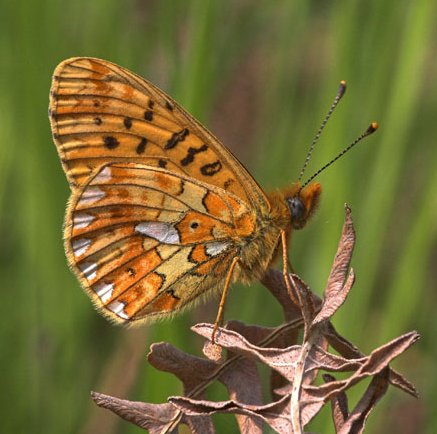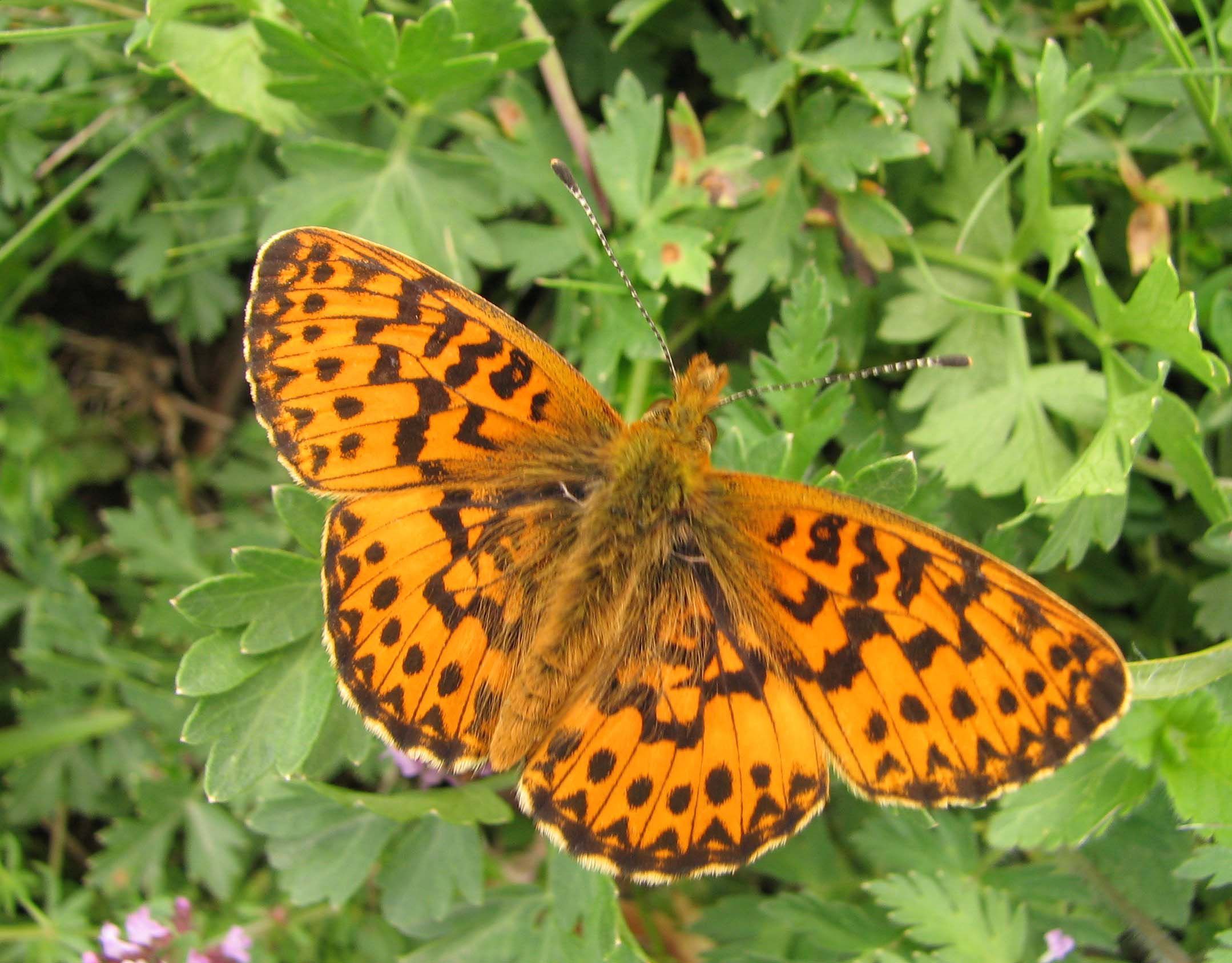 Pearl Bordered Fritillary - Boloria euphrosyne
Pearl Bordered Fritillary - Boloria euphrosyneFamily - Nymphalidae
 Pearl Bordered Fritillary - Boloria euphrosyne
Pearl Bordered Fritillary - Boloria euphrosyne
Family - Nymphalidae

Photo ©2008 Peter Elles,
www.ukbutterflies.co.uk
Click any photo for a larger image

Photo ©2008 Pippa Cox,
www.wildaboutbritain.co.uk
One of the earliest fritillaries to be seen on the wing usually at the end of May or early April. This year (2007) it was spotted in Brickfields Park on the 11th May. A resident species in the British Isles it will usually be found in woodland clearings, scrub and bracken, grassland. Once widespread it has declined in numbers over the last fifty years and is now listed as a UK Biodiversity Action Plan priority species. Widespread in Europe it is reported to be in decline there also. Wingspan of 38–45mm (1.5–1.8in), mainly orange with black spots, the underside of the wings have a silvery pearl marking along the edge from which the species gets its name.
Sometimes confused with the Small Pearl Bordered Fritillary, it can be distinguished from by its red chevrons along the pearl border whereas the small pearl has black chevrons, the Pearl Bordered also has two large "pearls" on the underside of the rear wing. Their bodies are densely hairy, which vary in colour from brown to beige, black–white striped antennae have bulbous knobs at their ends which are orange–brown tipped. The legs are also orange–brown in colour. The female has both darker markings and rounder wings than the male, caterpillars are black with white or yellow spines along their backs. The Pearl Bordered Fritillary files quite close to the ground regularly alighting to feed in spring flowers including various species of Violet one of its main food sources.
Males fritillaries have scent glands on their wings enabling recognition by females and so finding a suitable partner. The female will lay her eggs on the leaves of violet plants hatching after 10–14 days. Caterpillars begin feeding immediately molting four times (instars), they then hibernate in a shrivelled leaf usually at the base of the plant or in leaf litter. The following April after a further period of feeding the caterpillar is ready to pupate. The resulting chrysalis stage lasts about 10–14 days with the adult butterfly emerging during April and June.
 The Pearl Bordered Fritillary is listed in the UK Biodiversity Action Plan priority species list and is also a listed species in the Biodiversity Action Plan for Hampshire, as a regionally important species where SE England is a stronghold for the species, of ancient semi–natural woodland, pasture woodland and parkland. Hampshire holds a significant proportion in stable or moderate decline. No SAP exists, listed as a very specialised species not sufficiently catered for in HAPs. It is a UKBAP listed species and is listed in the Habitats & Species Directive schedule 5.
The Pearl Bordered Fritillary is listed in the UK Biodiversity Action Plan priority species list and is also a listed species in the Biodiversity Action Plan for Hampshire, as a regionally important species where SE England is a stronghold for the species, of ancient semi–natural woodland, pasture woodland and parkland. Hampshire holds a significant proportion in stable or moderate decline. No SAP exists, listed as a very specialised species not sufficiently catered for in HAPs. It is a UKBAP listed species and is listed in the Habitats & Species Directive schedule 5.
Agassiz #59.014, Bradley & Fletcher #1601
Site design ©1999– Brickfields Country Park - Privacy -